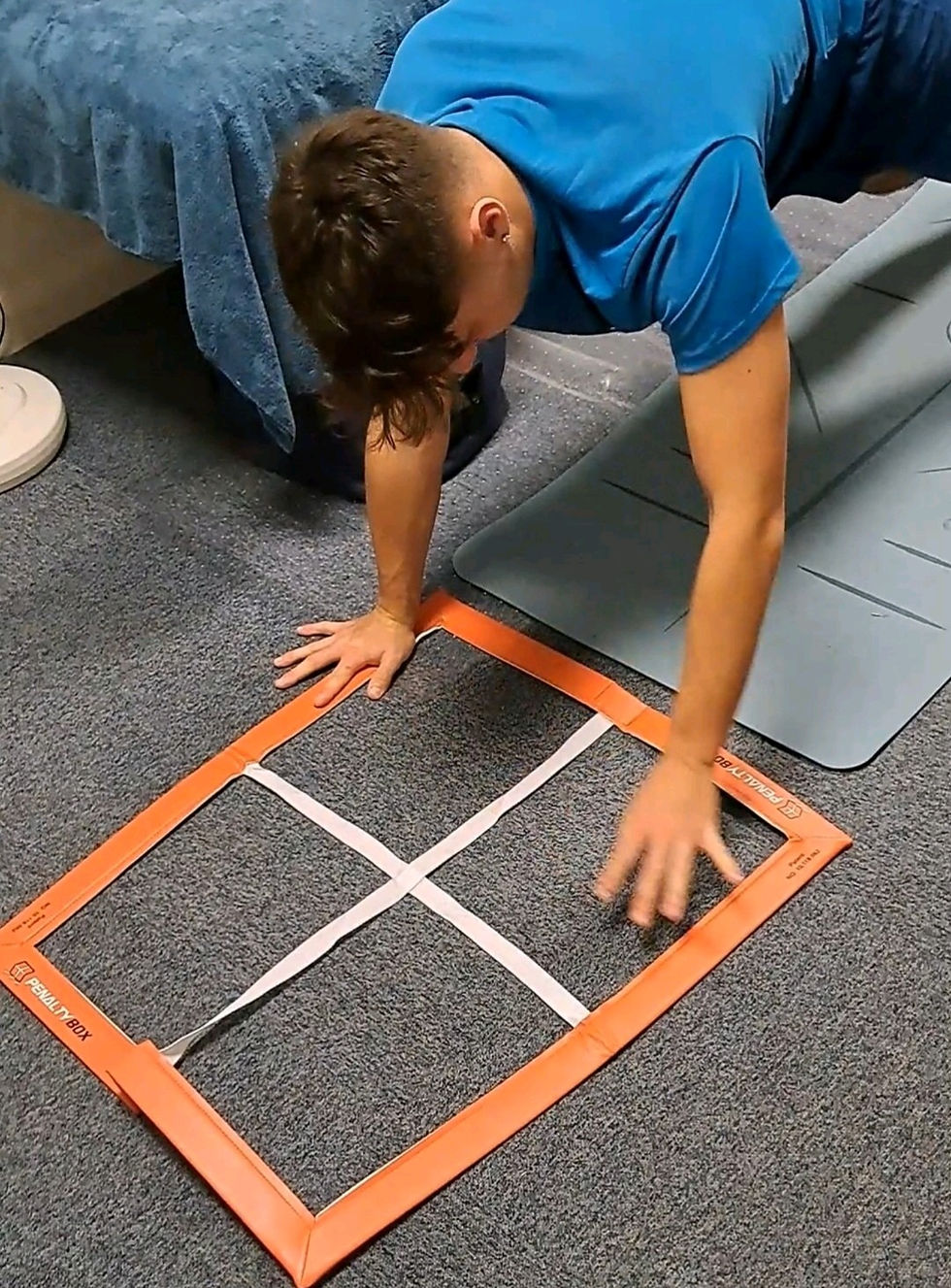

A Functional Movement Assessment (FMA) is valuable even if you're uninjured, as it identifies movement inefficiencies, imbalances, and potential injury risks.
By focusing on how your body moves, an FMA helps address underlying issues before they escalate into costly injuries or chronic pain, which could save you from expensive medical bills.
The assessment provides a personalized plan to improve mobility, strength, and stability, allowing you to self-manage your health and fitness.
This proactive approach empowers you to enhance physical performance and prevent long-term problems, promoting overall well-being without the need for frequent medical intervention.

A functional movement assessment identifies imbalances and limitations, helping to prevent injuries, improve mobility, and optimize performance through a corrective exercise programme.
Identify Movement Limitations
Detect Muscle Imbalances
Improve Posture
Reduce Chronic
Pain Risks
Track Progress
A client Functional Movement Assessment starts with a consultation. This consultation is a thorough discussion of the client’s health history, goals, and concerns, followed by an explanation of each assessment to ensure understanding and comfort.
This consultation is followed by:
1: Static Postural Assessment
Static postural assessments analyze the body's alignment while standing still, identifying imbalances, muscle tightness, and joint dysfunction.
This evaluation helps detect potential issues affecting movement efficiency, guiding corrective exercises and improving posture.

2: Movement Assessment
Functional movement assessments evaluate mobility, stability, and strength through exercises like the overhead squat and single-leg squat.
These tests reveal movement patterns, imbalances, and potential risk for injuries.

3: Mobility Assessment
The corrective exercise mobility assessment evaluates joint range of motion, flexibility, and movement quality.
It identifies restrictions or imbalances that limit mobility, guiding targeted exercises to improve flexibility, alignment, and overall functional movement.

4: Loaded
Assessment
Loaded movement assessments evaluate an individual's ability to perform fundamental movements, such as pushing, pulling, and overhead squats, under resistance.
These assessments help identify weaknesses, imbalances, and improper techniques, ensuring safer and more efficient movement patterns.
They are crucial for optimizing strength, stability, injury prevention, and overall athletic performance.

Kinetic Chain
Checkpoints
In functional movement assessments, the kinetic chain checkpoints are used to evaluate an individual's posture and movement quality to identify dysfunctions or imbalances.
These checkpoints focus on specific joints and segments of the body that are critical for optimal movement.
The main kinetic chain checkpoints include:
.png)
Head and Cervical Spine
Shoulders and Thoracic Spine
Lumbo-Pelvic-Hip Complex (LPHC)
Knee
Foot and Ankle
Key Focus:
Head and neck alignment relative to the shoulders.
Key Focus:
Shoulder positioning, thoracic spine mobility, and scapular movement.
Key Focus:
Pelvic tilt, hip rotation, and lumbar spine position.
Key Focus:
Knee alignment in relation to the foot and hip (especially valgus or varus positioning).
Key Focus:
Arch collapse (overpronation), external rotation, or flat feet.
Dysfunction:
Forward head posture or excessive cervical extension can lead to neck strain and affect overall posture and movement efficiency.
Dysfunction:
Rounded shoulders, scapular winging, or limited thoracic spine mobility can contribute to shoulder impingements, neck pain, and postural issues.
Dysfunction:
Excessive anterior or posterior pelvic tilt, lumbar lordosis (arching of the lower back), or hip instability can lead to lower back pain, hip issues, or inefficient movement patterns.
Dysfunction:
Knee valgus (knees caving inward) or knee varus (knees bowing outward), often related to foot or hip imbalances, can lead to increased stress on the knee joint.
Dysfunction:
Limited dorsiflexion, excessive pronation, or supination may lead to compensation throughout the kinetic chain, affecting balance and stability.
These checkpoints provide a framework for identifying movement dysfunctions and compensations that can impact performance, cause pain, or lead to injury. By analyzing these areas, corrective exercises can be designed to improve overall functional movement and reduce injury risk.



5: Dynamic
Assessment
Dynamic movement assessments evaluate an individual's ability to perform movements in motion, such as gait analysis, depth jumps, and the Davies test.
These tests assess coordination, stability, and strength during dynamic activities, identifying imbalances or weaknesses.
They help improve performance, prevent injuries, and guide personalized training and rehabilitation programs.




